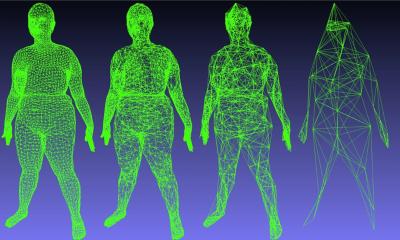A niche with no lobby
Interventional radiology in the diabetic foot
Italy is a front runner in diabetic foot revascularisation. Among the country’s pioneers is Professor Roberto Gandini, at the Diagnostic Imaging and Interventional Radiology Department, University of Tor Vergata in Rome, who has developed and improved new technical options in peripheral vascular disease intervention, a technique that now saves about 92% of patients from major amputations due to critical limb ischemia. However, during an interview with Karoline Laarmann, the professor pointed to one big problem: ‘Thwarted by turf battles and the medical industry, the new techniques cannot find their way into larger clinical practice despite the fact that they could save half of at-risk limbs from amputation’
At the Tor Vergata Hospital in Rome, Professor Roberto Gandini and team have performed more than 2,600 revascularisations since 1999. During this minimally invasive procedure a vascular introducer is first positioned to perform a preliminary angiographic study and then followed by recanalisation of long segments of the chronically occluded vessels using a combination of coronary guide wires and low-profile balloons. Thus the arteries are opened by two to four millimetres to enable sufficient blood flow through the foot.
The risk of complications is decreased in this less invasive procedure than seen in bypass surgery. It can also be used to treat very distal arterial obstructions. In May 2010, Prof. Gandini’s team published a five-year follow up study about the long-term outcomes of 510 diabetic patients with critical limb ischemia and an active foot ulcer or gangrene (Diabetes Care, May 2010 vol. 33 no. 5 977-982). All probands involved were candidates for a major amputation. The report showed that in ∼70% of the patients the limb could be saved and > 60 % of patients had healed wounds with smaller ulcers and less coronary artery disease. These patients had lower rates of dialysis treatment and required less emergency room care. Only 15 % of patients received a major amputation.
In Prof. Gandini’s opinion: ‘For successful treatment of impaired circulation in diabetic feet, instruments must have special features. The arterial occlusions are often very hard and long. Therefore, the balloon must be longer than usual and must sustain high pressure. Currently they are on the market but with delay. However, for some reason manufacturers have no interest in this dedicated device. Instead, they try to push us in the direction of stents. ‘If, on the one hand, stents offer the right initial results and longer vessel patency in respect of the balloon but, on the other, in the case of recurrence or complications the device could preclude or make vessel re-treatment harder, in my opinion in this sense the use of stents is very limited. I only use guide wires and balloons. The industrial target should go further than only increasing the revascularisation instruments portfolio. The goals must be education, support and training for old/new interventionalists to increase the number, skills and comprehension of anatomical complexity, but mainly push to create a dedicated multidisciplinary foot care group.’
The professor also points to a lack of awareness of IR in diabetic foot treatment in other medical disciplines. ‘The field of revascularisation in diabetic feet is a scope for different specialties, as there are interventional radiologists, cardiologists and vascular surgeons. While vascular surgeons currently do not have appropriate skills in these procedures, cardiologists still have a coronary approach in a vascular region characterised by completely different technical/anatomical aspects. Cardiologists believe they can work in the small vessels similarly to the coronary arteries, but the anatomical situation is totally different. In the coronary arteries you have to cross an occlusion of three centimetres length, while in the limb you have to open up vessels from 20-30 cm. You have to work much more aggressively here to be successful.’
However, he emphasises that who performs the revascularisation is not the issue; what matters is that it is performed in the right way. The interventional radiologist is currently the best clinical partner for foot care diabetologists, he believes, and a close relationship between diabetologist and radiologist therefore plays a key role: ‘The development of a new professional role in diabetology, with physicians dedicated particularly to foot care management would be auspicious; this ultra-specialist is a main decision maker for the treatment of foot pathology.
Today’s diabetologist should not only be a clinician in charge of clinical management, follow-up and ulcer care, but also a mix of orthopaedic specialists and surgeon. The best results in foot care originate from shared activity of a team composed of a technically skilled endovascular operator and an expert diabetologist.’ In the USA, Prof. Gandini concludes, interventional radiologists have already lost functional responsibility for artery treatment, passing this role to other specialists. In around 20 articles published in an issue of the American Journal of Vascular and Interventional Radiology, only one or two wrote about endovascular treatment and fewer than this specifically on distal artery revascularisation. He hopes that ‘the same thing is not going to happen in Europe’.
20.12.2011











